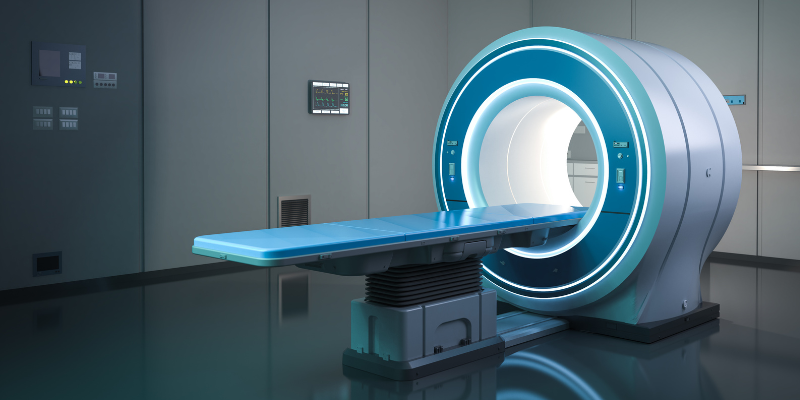In the aftermath of a car accident, the focus is often on visible injuries—the bruises, lacerations, and broken bones. Yet, what lies beneath the surface can often tell a more complex and concerning story. This is where Magnetic Resonance Imaging (MRI) scans become an indispensable tool in the realm of personal injury law, especially when advocating for the rights and recovery of accident victims in Illinois.
The Deceptive Nature of Car Accident Injuries
Car accidents are traumatic events, and in the immediate aftermath, adrenaline and shock can mask severe pain and injuries. Some victims might walk away feeling relatively unscathed, only to be plagued by debilitating symptoms days or even weeks later. These internal injuries, if left undiagnosed, can lead to long-term disability and chronic discomfort, requiring ongoing medical care.
MRI After Car Accident: A Window to the Hidden
An MRI scan is a powerful diagnostic test that uses a magnetic field and radio waves to create detailed images of the body, including internal organs and soft tissues. Unlike X-rays and CT scans, which are excellent for revealing bone fractures, MRI machines provide unparalleled insight into common injuries such as muscle tears, ligament damage, concussions, and spinal cord trauma.
Why Is MRI Crucial After a Car Accident?
- Early Detection of Soft Tissue Injuries: An MRI can reveal abnormalities such as nerve compression, herniated discs, ligament tears, and spinal cord injuries, which often result from the force of a car crash. Early detection is key to preventing long-term damage.
- Objective Evidence: In personal injury lawyer cases, concrete evidence is crucial. MRI images serve as undeniable proof of the severity of injuries, which can be pivotal when negotiating settlements or presenting a case in court.
- Guiding Treatment Plans: The detailed images provided by an MRI help radiologists and other medical professionals create a targeted treatment plan, ensuring that victims receive the most effective treatment for their injuries.
- Supporting Personal Injury Claims: As an Illinois plaintiff’s personal injury lawyer, MRI findings are invaluable in building a strong case for compensation. They provide the necessary documentation to prove that the injuries sustained are a direct result of the car accident.
- Understanding the Cost of an MRI: While the cost of an MRI scan may seem like an added burden, it is often essential for securing fair compensation. Many victims struggle with mounting medical bills, but proving the extent of an injury with an MRI can significantly impact a claim's outcome.
Continuing from the importance of MRI scans in revealing hidden injuries after a car accident, let's delve into real-world examples that underscore their critical role in both medical diagnosis and legal proceedings.
Case Study 1: The Unseen Spinal Injury
John, a 35-year-old office worker, was involved in a rear-end collision while stopped at a traffic light. Initially, he felt fine, apart from a mild headache. However, over the next few days, he began to experience severe neck pain and numbness in his arms. An initial X-ray at the ER showed no fractures, leading to a preliminary diagnosis of whiplash. However, his symptoms persisted, prompting a subsequent MRI. The MRI revealed a herniated disc in his cervical spine, pressing against a nerve - an injury that was completely invisible on the X-ray. This finding was pivotal in John's treatment, leading to specialized physical therapy and eventual surgery, and it played a crucial role in his personal injury claim, providing concrete evidence of the accident's impact.
Case Study 2: The Hidden Brain Injury
Sarah, a 28-year-old teacher, experienced a side-impact collision. She walked away from the accident feeling shaken but physically unharmed. A week later, Sarah began to suffer from severe headaches, dizziness, and difficulty concentrating. Concerned, her doctor ordered an MRI, which revealed a mild traumatic brain injury (TBI) - specifically, a small area of brain swelling not detected by the initial CT scan. This discovery explained her symptoms and significantly altered her treatment plan. From a legal perspective, the MRI findings were crucial in documenting the extent of her injuries, leading to a successful claim that covered her medical treatments, including long-term neurological care, and compensated for her time away from work.
Case Study 3: Chronic Pain and Soft Tissue Damage
Michael, a 42-year-old construction worker, was sideswiped by a speeding car, resulting in what appeared to be minor injuries. With no broken bones, he was quickly discharged from the hospital. However, Michael began to experience chronic lower back pain that made it impossible for him to work or engage in his usual activities. An MRI was performed several weeks after the accident, which showed multiple soft tissue injuries in his lower back, including a torn lumbar ligament and a small disc herniation. These findings were instrumental in his treatment, leading to targeted physical therapy and pain management. Legally, the MRI provided the evidence needed to substantiate Michael's claim for ongoing medical expenses and loss of income, highlighting the accident's long-term impact on his life and work.
The Indispensable Role of MRI
These real-world examples illustrate the indispensable role of MRI in the aftermath of car accidents. Hidden injuries, if undiagnosed, can lead to chronic pain, disability, and a decreased quality of life. From a legal standpoint, MRIs provide tangible evidence of these injuries, which is crucial in personal injury cases. They help in accurately assessing the damages and ensuring that victims receive the compensation they need for their recovery.
In Illinois, as in other jurisdictions, the insights gained from MRI after a car accident can make a significant difference in the outcome of personal injury claims. For victims, it is not just about the immediate aftermath but also about safeguarding their future, both in terms of health and financial stability. For personal injury attorneys, MRI findings are invaluable in building a strong, evidence-based case that reflects the true extent of their client's suffering and the long-term consequences of their injuries.
The Legal Implications of MRI Findings
In the legal arena, the findings from an MRI can significantly influence the outcome of a personal injury claim. They can substantiate claims for medical expenses, lost wages, pain and suffering, and other damages. Furthermore, they can counter any attempts by insurance companies to minimize or dismiss the injuries as pre-existing or not related to the accident.
Real-Life Examples of the Legal Implications of MRI Findings
MRI findings have played pivotal roles in personal injury cases, often serving as the linchpin for proving the extent of injuries, the necessity of medical treatment, and the basis for awarding damages. Here are some illustrative examples that highlight the legal implications of MRI findings after car accidents:
Example 1: Overcoming Insurance Denials
In a notable case, Emily, a 30-year-old graphic designer, was rear-ended at a stoplight. Initially, her insurance claim was minimized, with the insurance company attributing her back pain to pre-existing conditions based on her medical history. However, an MRI taken after the accident revealed a new lumbar spine disc herniation that corresponded with her symptoms. Armed with these MRI results, her attorney successfully contested the insurance company's denial, proving that the injury was a direct result of the car accident. This led to a substantial settlement that covered her medical expenses, rehabilitation, and lost wages during her recovery period.
Example 2: Establishing Causation in Court
In another case, Robert, a 45-year-old warehouse manager, suffered from severe neck pain and limited mobility after a collision. The defense argued that Robert's symptoms were due to degenerative disc disease, a common condition for his age, rather than the accident. However, an MRI taken shortly after the accident showed acute inflammation and a cervical disc herniation at specific levels that were not consistent with typical degenerative changes. His attorney used these findings to establish causation, effectively linking his current health issues directly to the accident. The jury was persuaded by the clear, objective evidence provided by the MRI, leading to a favorable verdict that included compensation for Robert's medical treatments, pain and suffering, and future care needs.
Example 3: Quantifying Pain and Suffering
Linda, a 52-year-old school teacher, was involved in a side-impact collision that seemed minor at first. With persistent shoulder and arm pain, an MRI was conducted, revealing a rotator cuff tear, a condition that was asymptomatic before the accident. Despite the physical therapy, Linda's mobility remained limited, affecting her professional and personal life. In court, her attorney presented the MRI findings to demonstrate the direct impact of the accident on Linda's quality of life. This objective evidence was crucial in quantifying her pain and suffering, leading to a significant award that reflected the injury's profound personal and professional ramifications.
Example 4: Enhancing Settlement Negotiations
Tom, a 38-year-old professional driver, experienced lower back pain after a rear-end collision. Initial negotiations with the insurance company stalled, as they contested the severity of his injuries. An MRI, however, revealed multiple disc herniations that explained his persistent pain and functional limitations. With this compelling evidence, Tom's attorney was able to negotiate a much higher settlement that accounted for his ongoing medical needs, potential future surgeries, and the impact on his ability to continue working in his profession.
These examples underscore the power of MRI findings in the realm of legal advocacy for car accident victims. In each case, the MRI served as a critical piece of evidence that helped to overcome skepticism, establish causation, quantify damages, and ultimately ensure that the victims received the compensation they deserved. For personal injury attorneys, incorporating MRI evidence into their legal strategy is often a game-changer, enabling them to present a stronger case that is grounded in undeniable, objective medical facts.
Navigating the Path to Recovery and Justice
For victims of car accidents in Illinois, understanding the importance of an MRI is the first step toward recovery and justice. It is essential to seek medical attention immediately after an accident, even if no injuries are apparent. If soft tissue injuries are suspected, an MRI should be conducted without delay.
As a dedicated Illinois plaintiff’s personal injury attorney, my commitment is to ensure that my clients receive the comprehensive medical evaluation they need and the justice they deserve. Leveraging the critical insights provided by MRI after a car accident, I am poised to advocate fiercely for the rights of accident victims, ensuring they are compensated for their hidden injuries and the impact on their lives.
The invisible injuries sustained in a car accident can have profound implications on a victim's life. An MRI is a crucial diagnostic tool that reveals these hidden injuries, providing a foundation for effective medical treatment and a compelling personal injury claim. If you or a loved one has been involved in a car accident, do not overlook the potential for unseen injuries. Seek medical evaluation, and consult with a knowledgeable personal injury attorney who can guide you through the complexities of your case with the support of crucial MRI evidence.
Working With Palermo Law Group
If you've been involved in an auto accident and are facing serious injuries, seeking legal advice is crucial. At Palermo Law Group, we understand the challenges injury victims encounter after a car accident. Our team of experienced car accident lawyers is dedicated to providing personalized legal assistance to help you navigate through this difficult time. With a focus on personal injury cases, including those involving serious injuries, our law firm offers free consultations to discuss your options and provide the guidance you need. Don't face the aftermath of an auto accident alone – trust Palermo Law Group to advocate for your rights and work tirelessly to secure the compensation you deserve.
For a free consultation contact our law firm by calling (630)684-2332 or visit our website at https://www.palermolawgroup.com/.


